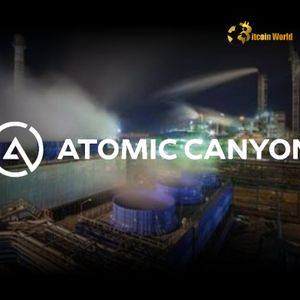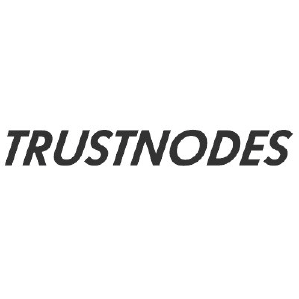AI in Nuclear: Atomic Canyon Secures $7M to Transform Power Plant Docs
4 min read
BitcoinWorld AI in Nuclear: Atomic Canyon Secures $7M to Transform Power Plant Docs The tech industry’s ambitious AI plans require significant energy. While many look to renewables, nuclear power is seen by some as a vital part of the future energy mix. However, the nuclear industry is not known for rapid change. This is where AI could play a crucial role. One company, Atomic Canyon , is aiming to use artificial intelligence to accelerate operations within nuclear power plants, starting with a fundamental problem: documents. What is Atomic Canyon and Why Focus on AI in Nuclear? Trey Lauderdale, a serial entrepreneur with a background in healthcare technology, founded Atomic Canyon about 18 months ago. His interest in the nuclear sector was sparked by simply living near the Diablo Canyon Power Plant in San Luis Obispo, California. He met many plant workers in his community and learned about the immense volume of documentation involved in running a nuclear facility. Diablo Canyon alone reportedly holds around 2 billion pages of documents. Lauderdale recognized this ‘paper problem’ as a potential area where AI could make a significant impact. Finding specific information within this mountain of data is time-consuming for engineers, maintenance staff, and compliance officers. Slow access to critical documents can impact efficiency and potentially safety within a nuclear power environment. Taming the Paper Beast in Nuclear Power Plants The sheer volume of documents is a major hurdle for the nuclear power industry. These documents cover everything from technical specifications and maintenance logs to safety procedures and regulatory compliance records. Accessing the right information quickly is essential for day-to-day operations and critical decision-making. Atomic Canyon’s initial focus is on making this vast library of documents easily searchable using AI. By providing quick, accurate access to information, the company aims to streamline operations, reduce time spent searching, and improve overall efficiency at nuclear facilities. How AI Applications Tackle Nuclear’s Document Challenge Developing AI applications for a highly technical and regulated industry like nuclear power presents unique challenges. Atomic Canyon initially found that standard AI models struggled with the specialized terminology and acronyms common in nuclear documents, leading to ‘hallucinations’ or incorrect outputs. To overcome this, Atomic Canyon needed significant computing power to train their models on this specific domain knowledge. They secured compute time from Oak Ridge National Laboratory, which houses one of the world’s fastest supercomputers. Their approach uses sentence embedding to index documents, making them searchable via retrieval-augmented generation (RAG). RAG is a technique that combines the power of large language models (LLMs) with retrieval systems. Instead of generating responses based solely on their training data, the LLMs are directed to specific documents retrieved by the search system. This grounds the AI’s responses in factual information from the source documents, reducing the risk of hallucination – a critical safety consideration in the nuclear industry. Currently, Atomic Canyon is concentrating on enhancing document search. Lauderdale explained that starting with search has lower stakes; getting a document title slightly wrong is less critical than generating incorrect technical instructions. This allows them to build a solid foundation and gain trust within the industry. Atomic Canyon Secures Funding from Energy Impact Partners Atomic Canyon’s work is gaining traction. The company recently closed a $7 million seed funding round. This investment was led by Energy Impact Partners , a firm known for investing in companies accelerating the energy transition. This partnership highlights the growing interest in applying advanced technology to the energy sector. Other participating investors in the round included Commonweal Ventures, Plug and Play Ventures, Tower Research Ventures, Wischoff Ventures, and previous angel investors. Lauderdale stated that securing a deal with Diablo Canyon in late 2024 was a key factor that prompted the decision to raise capital, as it generated interest from other nuclear power companies. The Future Vision for AI in Nuclear While search is the immediate priority and offers significant value given the volume of documents, Lauderdale envisions a future where AI in nuclear goes further. Eventually, he sees Atomic Canyon’s AI assisting in drafting documents, providing a ‘first round draft’ complete with references. However, he strongly emphasizes that a human will always remain in the loop for review and final approval. This cautious, phased approach reflects the high-stakes nature of the nuclear industry. Nailing the search functionality is seen as the essential first step, providing a long runway for the company based on the sheer number of documents that need to be indexed and made accessible. Summary Atomic Canyon is leveraging AI applications to solve a fundamental problem in the nuclear power industry: managing and accessing vast amounts of documentation. By developing specialized AI models and utilizing powerful computing resources, they are building a system that makes finding critical information faster and more accurate. Their recent $7 million seed round, led by Energy Impact Partners , signals confidence in their approach and the potential for AI in nuclear to improve efficiency and operations within this vital energy sector. Starting with advanced search, Atomic Canyon aims to provide the speed the industry needs, while keeping safety and human oversight paramount. To learn more about the latest AI market trends, explore our article on key developments shaping AI applications. This post AI in Nuclear: Atomic Canyon Secures $7M to Transform Power Plant Docs first appeared on BitcoinWorld and is written by Editorial Team

Source: Bitcoin World



